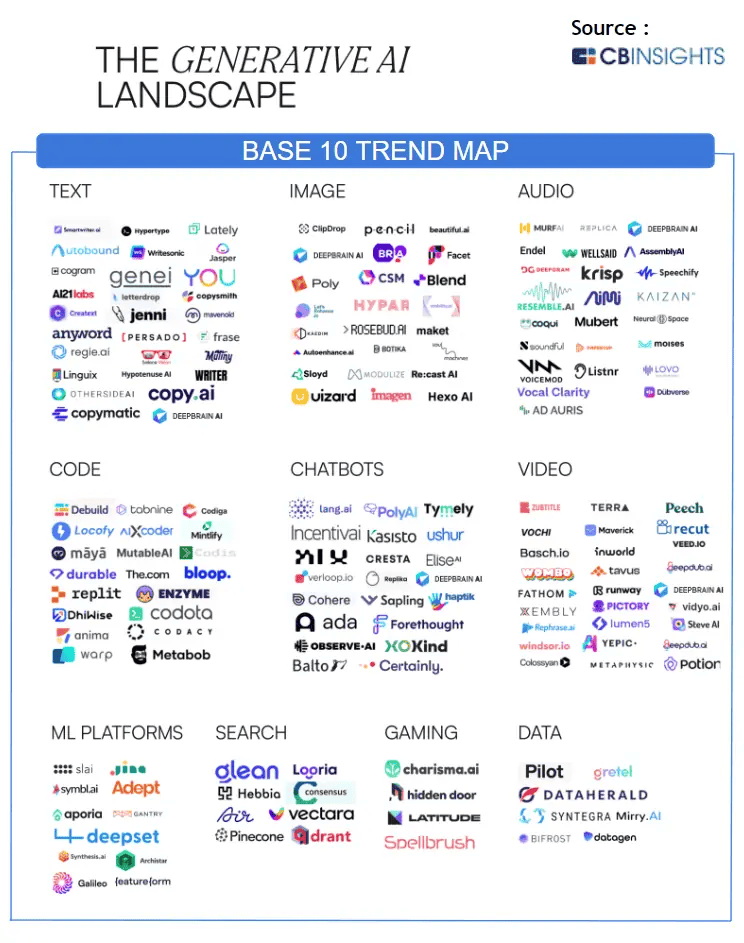
Storytelling has always been at the heart of human culture. From the earliest cave paintings to the grand epic tales shared around campfires, stories have been our way of understanding the world and communicating with each other. But storytelling has evolved significantly, especially with the advent of digital technology.
The traditional forms of storytelling—oral, written, and printed—formed the foundation, but digital media brought in a seismic shift. The transition to digital storytelling began with simple text-based websites and evolved into highly interactive multimedia experiences. This shift wasn’t just about moving stories online. It was about transforming them into something more engaging and participatory.
One of the biggest changes is how stories are being told. Unlike traditional narratives, which have a clear beginning, middle, and end, digital storytelling often offers nonlinear narratives that allow audiences to explore different paths and outcomes. This interactive nature keeps the audience engaged and makes them feel part of the story.
Technological advancements have made it possible to create stories that are not limited by physical constraints. Virtual and augmented reality, for instance, allow creators to build entire worlds that audiences can virtually step into. This level of immersion is changing the way we experience stories. Audiences are no longer passive recipients; they are now active participants.
However, these advancements are also redefining the relationship between storytellers and their audiences. With the use of social media and other interactive platforms, audiences can now contribute to and even shape the stories being told. This two-way interaction makes the experience more personal and impactful.
In this digital age, storytelling is not just about conveying information. It’s about creating experiences that resonate on a deeper level. The evolution of storytelling from page to portal signifies a new era where the boundaries between the storyteller and the audience blur, creating a collaborative and immersive narrative that enhances engagement.

Defining Immersive Storytelling
Immersive storytelling is more than just a buzzword. It’s about creating experiences that captivate the audience on a sensory level, drawing them into the narrative instead of just presenting it to them. So, what exactly makes storytelling immersive?
First, interactivity is crucial. Traditional stories may entertain or inform, but immersive stories invite the audience to participate, making choices that influence the narrative direction. This active involvement keeps people engaged and invested.
Next comes the element of engagement. Immersive storytelling is designed to grab hold and not let go. It leverages emotional connections through relatable characters, compelling plots, and genuine stakes. It makes the audience care about the outcome.
Sensory involvement is another key component. Using technologies like Virtual Reality (VR) and Augmented Reality (AR), creators can engage multiple senses, making the experience more real and memorable. This includes visual and auditory elements and sometimes even tactile feedback.
Real-world examples bring these concepts to life. Think of how video games today offer intricate storylines where players’ choices determine the plot or how immersive theater allows audiences to explore a story by physically moving through space. These examples show how effective immersive storytelling can be in creating meaningful experiences.
For those looking to embrace this method, the key is balancing interactivity, engagement, and sensory richness. Simple steps like incorporating interactive elements, using high-quality visuals, and crafting a relatable narrative can make a big difference. By keeping these core components in mind, storytellers can truly immerse their audience in their stories.

The Psychology Behind Immersive Experiences
Understanding why immersive storytelling works often boils down to psychology. Empathy plays a huge role in how we connect with stories. When a narrative is engaging, it’s easier for us to put ourselves in the protagonist’s shoes. This emotional engagement fosters a deeper connection to the story.
Immersive experiences have a significant impact on the brain. Studies show that when people are engaged in an immersive story, their brain activity mirrors the activity of the characters in the story. This phenomenon, known as neural coupling, helps explain why we become so absorbed in immersive narratives.
The allure of immersive storytelling is also rooted in human nature. People are naturally curious and drawn to experiences that offer escape and exploration. These narratives tap into our desire for adventure and discovery, making the experience both enjoyable and memorable.
Another psychological aspect at play is the sense of agency. Immersive storytelling often gives audiences a say in the story, whether through choosing a character’s path or influencing the outcome. This agency makes people feel more connected and responsible for the story’s direction, enhancing their engagement level.
Recognizing these psychological aspects can help creators craft stories that truly resonate. By focusing on empathy, utilizing neural coupling, catering to human curiosity, and providing a sense of agency, storytellers can design narratives that capture and hold the audience’s attention.
Tools and Technologies Enabling Immersive Storytelling
Creating immersive stories wouldn’t be possible without the right set of tools and technologies. Each piece of technology adds another layer of depth and interactivity to the narrative, transforming how we experience and engage with stories.
Virtual Reality (VR) and Augmented Reality (AR) have become game-changers. VR immerses users in a completely virtual environment, making them feel as though they’re part of a different world. AR, on the other hand, overlays digital elements in the real world, enhancing our perception of reality. Both technologies provide a high level of sensory immersion that’s hard to achieve through traditional methods.
Artificial Intelligence (AI) and machine learning also play a crucial role. AI can adapt stories in real-time based on user inputs and behaviors, creating personalized experiences. For instance, chatbots and virtual assistants can make interactive narratives more dynamic by adapting to users’ choices and offering unique story paths.
Multimedia and transmedia storytelling platforms offer another dimension of immersion. Instead of telling a story through a single medium, transmedia storytelling uses multiple platforms—like video, text, social media, and games—to tell different parts of the same story. This approach keeps audiences engaged as they piece together the narrative from various sources.
Technology isn’t just about fancy gadgets; it’s a means of enriching storytelling. Incorporating these tools into narratives ensures that stories are more interactive, engaging, and memorable. Creators aiming for immersive experiences should master the use of VR, AR, and AI and explore the potential of multimedia and transmedia storytelling. These technologies not only enhance the story but also deepen the audience’s connection to it.

Case Studies: Brands That Excel in Immersive Storytelling
Exploring real-world examples of brands that have successfully implemented immersive storytelling can provide valuable insights and inspiration. These brands have leveraged technology and creativity to connect with their audiences on a whole new level.
Take Nike, for instance. Nike definitely used a blend of physical and digital storytelling in their “Reactland” campaign (it looks like “Like React” might be a slight misremembering).
Here’s a breakdown of what they did:
- Physical Experience: They created pop-up installations in major cities like London, Paris, New York, and Tokyo. These installations featured treadmills equipped with motion-capture technology.
- Digital Storytelling: Runners could try on the Epic React Flyknit shoes and run on the treadmills. Their movements were then translated into a personalized digital avatar that ran through a virtual world called Reactland. This world was vibrant and playful and reflected the shoe’s bouncy, responsive feel.
Why it worked:
- Immersive and Interactive: It combined the tangible experience of trying on the shoes with a fun, personalized digital adventure.
- Shareable: Participants could share their Reactland runs on social media, extending the campaign’s reach.
- Memorable: It created a unique and engaging experience that went beyond traditional advertising.
You’re spot on about this being an unforgettable campaign that effectively blended interactivity and immersive experiences. It’s a perfect example of how brands are using digital storytelling to connect with audiences in new and exciting ways.
Another standout is National Geographic. National Geographic is a fantastic example of how digital storytelling, particularly through VR, can create powerful and immersive experiences.
Their VR series truly transports viewers to incredible locations, allowing them to:
- Explore Remote Environments: Experience the wonder of Antarctica, climb Mount Everest, or dive into the depths of the ocean, all from the comfort of their own homes.
- Engage with Stories on a Deeper Level: By virtually “being there,” audiences develop a stronger connection to the narratives and the environments being explored.
- Gain New Perspectives: VR experiences can foster empathy and understanding by allowing viewers to see the world through different eyes.
National Geographic’s use of VR exemplifies how digital storytelling can go beyond entertainment and become a tool for education, exploration, and even conservation. It’s a shining example of how technology can be used to tell stories in a more impactful and meaningful way.
Coca-Cola’s “Share a Coke” campaign (it seems like “Have a Coke” might be a slight blend with their classic slogan) was a brilliant example of using personalization and digital platforms to create a powerful and engaging narrative.
Here’s why it was so effective:
- Personalization: Replacing their iconic logo with popular names and terms like “friend” or “family” on bottles and cans created a sense of individual connection. People were excited to find their own names or those of loved ones, making the product feel more personal.
- Social Media Integration: Encouraging consumers to share their personalized bottles on social media amplified the campaign’s reach and created a sense of community. People shared photos, stories, and experiences related to the names on their bottles.
- Emotional Connection: The campaign tapped into the power of personal connections and shared experiences, making it more than just about selling a product. It fostered a sense of belonging and encouraged people to connect with each other.
This campaign was a masterclass in using digital tools to enhance storytelling. It demonstrates how brands can leverage personalization and social media to create engaging narratives that resonate with audiences on an emotional level.
It’s inspiring to see how these brands are pushing the boundaries of storytelling in the digital age.
About how indie games are using digital storytelling! They often have more freedom to experiment and innovate with narratives and player interaction.
Firewatch is a fantastic example of how indie games can excel at digital storytelling. It masterfully combines a compelling narrative with striking visuals and an immersive environment to create a truly unforgettable player experience.
Here’s what makes Firewatch so special in terms of storytelling:
- Atmospheric Storytelling: The game’s setting, the Wyoming wilderness, is beautifully rendered and plays a crucial role in the narrative. The isolation and beauty of the environment contribute significantly to the game’s atmosphere and emotional impact.
- Character-Driven Narrative: The relationship between Henry and Delilah, the two main characters who communicate solely through walkie-talkies, is the heart of the game. Their witty banter, growing trust, and shared experiences draw players into their story.
- Mystery and Intrigue: The game slowly unfolds a mystery that keeps players guessing and engaged. The sense of unease and the unknown creates a compelling narrative that encourages players to explore and uncover the truth.
- Player Agency: While the story follows a linear path, players have choices in how they interact with Delilah and the environment. This creates a sense of agency and allows players to shape their own experiences within the narrative.
Firewatch is a testament to the power of indie games to deliver impactful and memorable stories. It’s a perfect example of how smaller teams can leverage digital tools to create immersive and emotionally resonant experiences.
This example! It perfectly illustrates how digital storytelling is thriving beyond big-budget productions.
“From Nike’s interactive shoe launch to National Geographic’s VR expeditions and Coca-Cola’s personalized storytelling, it’s clear that successful immersive experiences hinge on more than just technology. These brands have demonstrated the power of combining compelling narratives with digital tools to create personalized, engaging, and emotionally resonant experiences.
Whether it’s through virtual worlds, interactive campaigns, or personalized content, the key lies in making audiences feel truly involved in the story. By learning from these examples and understanding the principles behind their success, brands, and creators of all sizes can unlock the potential of immersive storytelling to connect with their audiences on a deeper level.”

Creating Immersive Content: Strategies and Best Practices
Crafting immersive content requires a strategic approach. It’s not just about using the latest technology but also about tapping into effective storytelling techniques to engage the audience deeply. Here are some strategies and best practices to consider.
Start by focusing on your narrative structure. A strong story needs to have a clear arc, even if iit’spresented in a nonlinear way. Whether the plot unfolds through interactive segments or user choices, maintaining a coherent structure is essential. This keeps the audience engaged and makes the narrative easier to follow.
User input is another critical component. Allowing the audience to make choices or influence the story adds a layer of interactivity that traditional stories lack. This could be simple decisions that slightly change the course or complex ones that significantly alter the outcome. The key is to make the audience feel their choices matter.
Incorporate high-quality visuals and sound. Sensory elements play a big role in making an experience feel immersive. Investing in high-resolution graphics, realistic sound effects, and even haptic feedback can add depth to your story, making it feel more real and engaging.
Balancing technology with storytelling techniques is crucial. It’s easy to get carried away with VR, AR, or AI, but remember that technology should enhance the narrative, not overshadow it. The story should always be at the forefront, with technology serving as a tool to bring it to life.
Real-world testing and feedback loops are essential. Before launching your immersive content, conduct thorough testing with real users. Gather feedback on what works and what doesn’t. Iteration is key to refining the experience and making it as engaging as possible.
Finally, focus on emotional engagement. An immersive story resonates more when it hits emotional chords. Create relatable characters and situations that evoke genuine emotions, be it excitement, fear, happiness, or sadness. Emotional engagement keeps your audience invested and coming back for more.

The Role of Data in Enhancing Immersive Storytelling
Data plays an increasingly important role in shaping immersive storytelling. Analytics provide insights into audience behavior, revealing what resonates and what doesn’t. By examining these metrics, storytellers can make informed decisions to fine-tune their narratives.
Personalization is one of the biggest advantages data offers. By collecting data on user preferences, habits, and feedback, stories can be customized to fit individual tastes. Imagine a narrative that adapts in real time based on how a user interacts with it. This level of personalization creates a unique experience for each audience member, making the story more impactful.
Data also helps in understanding engagement patterns. Analyzing which parts of the story capture the most attention and which sections cause drop-offs can be incredibly revealing. This information allows creators to tweak narratives to maintain engagement throughout.
Feedback loops are another essential aspect of using data in storytelling. Regular updates based on user feedback can keep the story relevant and engaging. This continuous improvement approach ensures that the narrative evolves alongside the audience’s expectations and preferences.
However, using data responsibly is crucial. Privacy and data security should always be top priorities. Transparent data collection practices and clear communication about how data will be used help build trust with the audience.
Incorporating data into storytelling isn’t about making the story more complex; it’s about making it smarter, more engaging, and more relevant. By leveraging data, creators can craft experiences that not only captivate but also resonate deeply with their audience.

Challenges and Ethical Considerations in Immersive Storytelling
Creating immersive experiences presents a unique set of challenges and ethical questions. One major concern is privacy. As immersive storytelling often relies on data collection to tailor experiences, ensuring the security of this data is paramount. Audiences need to feel confident that their information is safe and used responsibly.
Ethical storytelling practices are also essential. Stories that seek to manipulate emotions or mislead audiences can damage trust. Transparency about the narrative’s intent and respecting the audience’s emotional boundaries are critical. It’s about being honest and ethical in how stories are constructed and delivered.
Another challenge lies in managing audience expectations. Immersive experiences can evoke strong emotions, making it crucial to set appropriate content warnings and boundaries. Failing to address these can lead to negative experiences and backlash.
Technical issues can also pose challenges. Ensuring a seamless experience across different devices and platforms requires rigorous testing and troubleshooting. Even minor glitches can pull users out of the story, breaking immersion.
Creators must also be mindful of accessibility. Immersive storytelling should be inclusive, considering audiences with different abilities. This means incorporating features like subtitles and alternative navigation methods and ensuring that experiences are engaging for all users.
Finally, balancing creativity with commercial objectives can be tricky. While it’s important to innovate, creators must also consider the business aspects, such as cost and scalability, and how these factors can impact the story’s reach and effectiveness.
Navigating these challenges requires a thoughtful and user-centered approach. By prioritizing ethical considerations, privacy, inclusivity, and technical quality, creators can build immersive experiences that are not only engaging but also respectful and trustworthy.

The Future of Audience Engagement Through Immersive Storytelling
Looking ahead, the future of audience engagement through immersive storytelling is incredibly promising. As technology continues to evolve, the possibilities for creating even more engaging and interactive narratives are boundless. Emerging technologies like 5G and advanced AI will open new doors, allowing stories to be more real-time and responsive than ever before.
One trend to watch is the fusion of physical and digital worlds, often referred to as “hygital”experiences. Imagine narratives that seamlessly blend real-world elements with digital enhancements, creating stories that can be experienced both online and offline. This will further blur the lines between reality and fiction, offering unprecedented levels of immersion.
Another exciting development is the potential for collaborative and community-driven storytelling. With platforms that allow multiple users to contribute to the narrative, storytelling will become a more collective experience. This democratization of storytelling empowers audiences not just to consume stories but to help create them.
The focus on personalization will continue to grow. As data analytics become more sophisticated, narratives will adapt even more precisely to individual preferences and behaviors. This will make every story experience unique, enhancing emotional connections and engagement.
Ultimately, the impact on audience engagement will be profound. Immersive storytelling is not just a trend; it’s reshaping how we connect with stories and, by extension, with each other. Brands, creators, and audiences all stand to benefit from this evolution, experiencing deeper and more meaningful connections.
—
Unlock the Power of Immersive Storytelling with DeepBrain AI Studios
In today’s digital age, traditional storytelling methods often fail to captivate audiences. People now crave stories that are engaging, interactive, and immersive. DeepBrain AI Studios allows you to bridge the gap between reality and digital narratives, providing tools to make your stories unforgettable.
How DeepBrain AI Studios Elevates Your Storytelling
Create Lifelike AI Avatars
Bring your stories to life with realistic, AI-powered avatars. These characters don’t just move; they convey emotions and expressions that connect with your audience. You can choose from a wide variety of pre-built avatars or design one that fits your brand perfectly. This allows for personalized storytelling, ensuring that every character feels authentic and relatable.
Generate AI Videos with Ease
No need to hire expensive production teams or spend hours editing. With DeepBrain AI Studios, you can transform written scripts into professional-grade videos within minutes. The platform is designed with user-friendliness in mind, making it easy to create high-quality content even if you don’t have extensive experience in video production. The intuitive interface helps streamline your workflow, allowing you to focus more on creativity and less on technical barriers.
Build Interactive Experiences
Go beyond static, one-sided stories. Use DeepBrain AI Studios to create interactive narratives that pull your audience into the action. Develop personalized storylines, interactive scenarios, or choose-your-own-adventure-style content. By giving your audience control over how the story unfolds, you make the experience more engaging and memorable. Interactivity keeps viewers hooked, making them feel like they are part of the narrative.
Enhance VR and AR Storytelling
Immerse your audience even further by integrating DeepBrain AI Studios with virtual reality (VR) and augmented reality (AR) technologies. Imagine transporting your viewers into new worlds where they can interact with their surroundings and characters. VR and AR experiences create a deeper connection with the content, making the story not only seen but felt. This level of immersion transforms passive viewers into active participants.
Who Can Benefit from DeepBrain AI Studios?
Brands
Create marketing campaigns that aren’t just seen but felt. By using AI avatars and immersive storytelling, brands can connect with their audiences on a personal level. Craft memorable narratives that speak to your customers and leave a lasting impact.
Educators
Make learning fun and engaging. Use interactive experiences and AI-generated videos to teach complex concepts in ways that captivate students. Interactive storylines foster engagement and help students retain information more effectively.
Content Creators
Stand out in a crowded content landscape by creating stories that are dynamic, engaging, and visually compelling. Whether you’re making videos for social media or larger projects, DeepBrain AI Studios helps you craft stories that resonate.
Game Developers
Enhance your game’s narrative with realistic AI-driven characters. Create dynamic storylines that adapt to player choices, making the gameplay more interactive and immersive.
Start Creating Today
Stop telling ordinary stories. Use DeepBrain AI Studios to create experiences that leave a lasting impression. Unlock the future of storytelling by starting your free trial today and discover how immersive, interactive narratives can transform your content.
—


